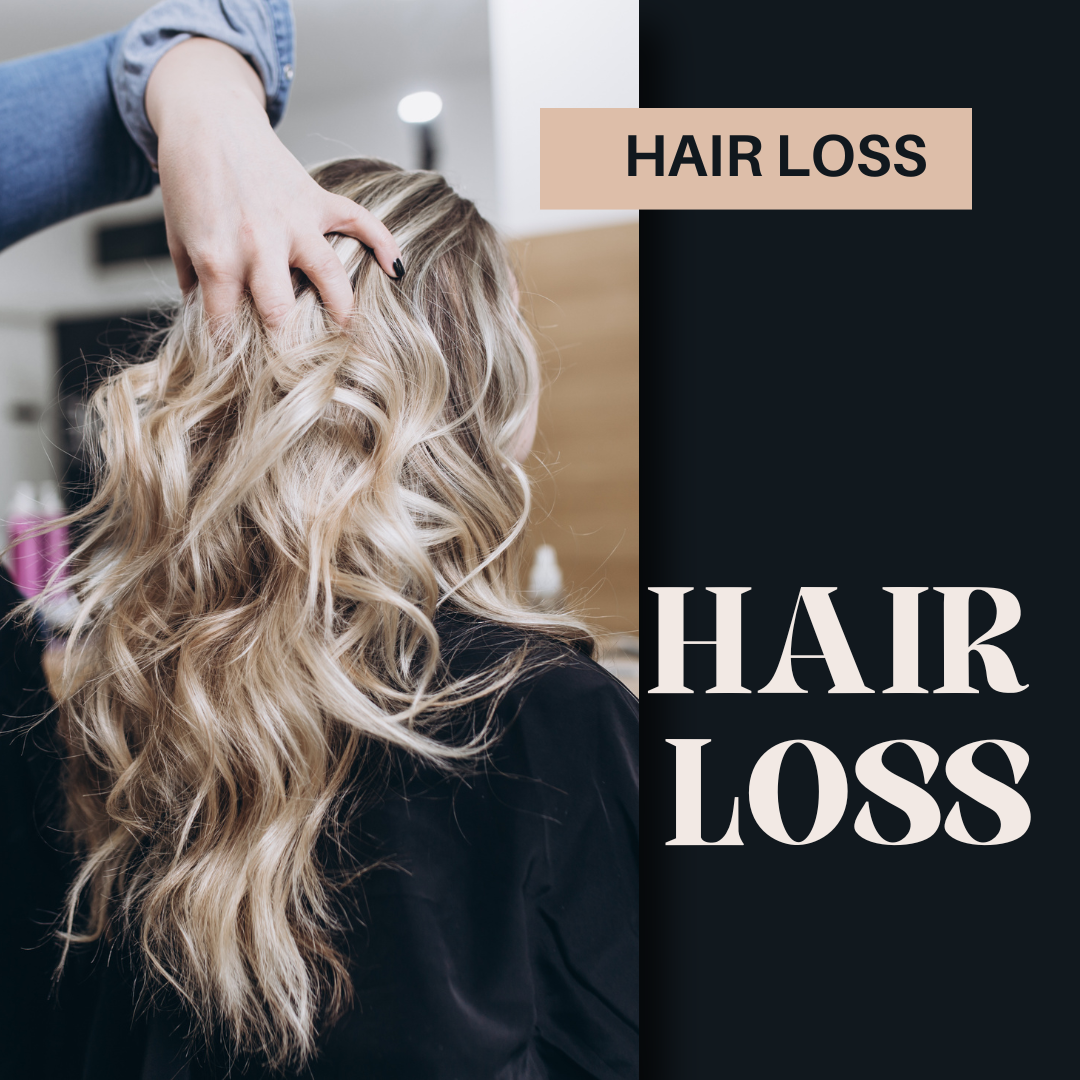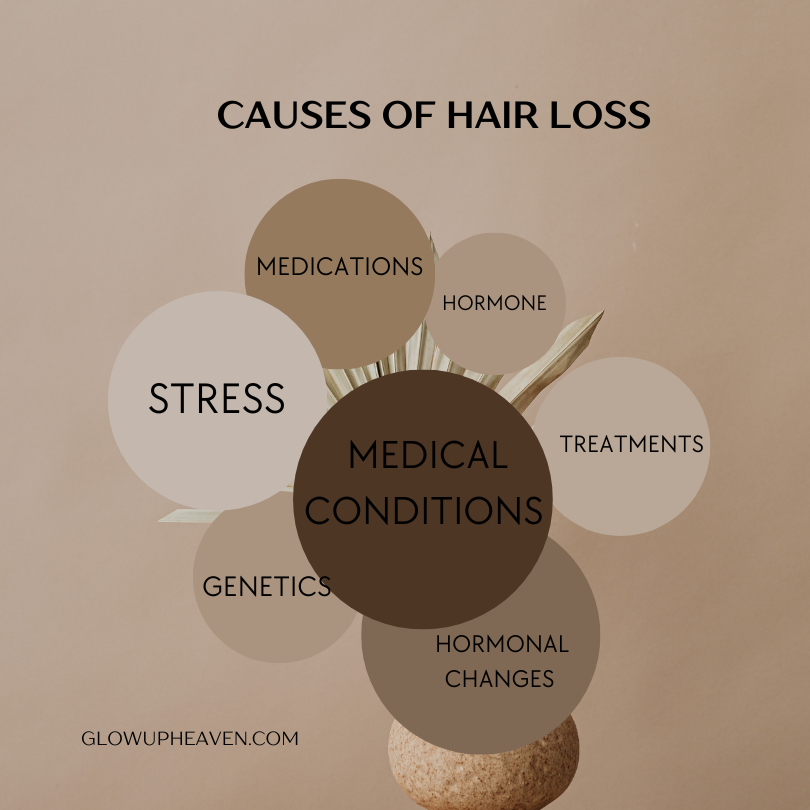INTRODUCTION
Hair loss is a common concern affecting millions of people worldwide, transcending age, gender, and ethnicity. While losing a few strands daily is normal, excessive hair loss can be distressing. Understanding the causes, exploring various treatments, and implementing preventive measures can help manage and mitigate hair loss effectively.

CONTENT
• What Causes Hair loss
• Treatments For Hair loss
• Prevention of hair loss
• Conclusion
What Causes Hair Loss?
Hair loss, medically known as alopecia, can result from a multitude of factors. Here are some of the most common causes:

• Genetics
Hereditary hair loss, or androgenetic alopecia, is the most prevalent cause of hair loss, affecting both men and women. In men, it is commonly referred to as male-pattern baldness, characterized by a receding hairline and balding on the crown. Women typically experience thinning across the entire scalp.
• Hormonal Changes
Hormonal imbalances can lead to hair loss. Conditions such as pregnancy, childbirth, menopause, and thyroid problems can affect hormone levels, leading to temporary or permanent hair loss.
• Medical Conditions
Several medical conditions are linked to hair loss, including:
– **Alopecia Areata:** An autoimmune disorder causing patchy hair loss.
– **Scalp Infections:** Fungal infections like ringworm can invade hair and skin, leading to hair loss.
– **Lupus:** An autoimmune disease that can cause hair loss.
• Medications and Treatments
Certain medications and treatments can trigger hair loss as a side effect. These include:
– **Chemotherapy and Radiation Therapy:** Common treatments for cancer can result in widespread hair loss.
– **Antidepressants and Blood Thinners:** Some prescription medications can lead to hair loss.

• Physical and Emotional Stress
Severe physical or emotional stress can trigger telogen effluvium, a condition where hair prematurely moves into the shedding phase. This type of hair loss is usually temporary but can be distressing.
• Nutritional Deficiencies
A lack of essential nutrients such as iron, protein, and vitamins can cause hair thinning and loss.
• Hairstyles and Treatments
Excessive hairstyling, tight hairstyles, and chemical treatments can damage hair follicles, leading to traction alopecia and hair breakage.
Treatments for Hair Loss
Various treatments are available to address hair loss, ranging from medical interventions to lifestyle changes and natural remedies.
1-Medications
• Minoxidil
Minoxidil is an over-the-counter medication approved by the FDA for treating hair loss. Applied topically, it helps stimulate hair growth and slow down hair loss.
• Finasteride
Finasteride is a prescription medication for men that reduces hair loss by inhibiting the hormone responsible for shrinking hair follicles.
2-Hair Transplant Surgery
Hair transplant surgery involves moving hair follicles from one part of the body (usually the back of the scalp) to the thinning or balding areas. Techniques include:
– **Follicular Unit Transplantation (FUT):** A strip of scalp is removed, and hair follicles are transplanted.
– **Follicular Unit Extraction (FUE):** Individual hair follicles are extracted and transplanted.

3-Laser Therapy
Low-level laser therapy (LLLT) is a non-invasive procedure that utilizes red light to promote hair growth. It can be performed at home with laser combs or caps or in a clinical setting.
4- Platelet-Rich Plasma (PRP) Therapy
PRP therapy involves injecting platelet-rich plasma derived from the patient’s blood into the scalp
5-Natural Remedies
Essential Oils
Certain essential oils, such as rosemary and peppermint, have been shown to promote hair growth when massaged into the scalp.
Scalp Massage
Regular scalp massages can improve blood circulation to hair follicles, promoting hair growth.

Prevention of Hair Loss
Preventing hair loss involves adopting a holistic approach that includes proper hair care, a healthy lifestyle, and avoiding harmful practices.
• Healthy Diet
Eating a balanced diet rich in vitamins and minerals is crucial for hair health. Focus on foods high in:
– **Protein:** Lean meats, fish, beans, and nuts.
– **Iron:** Spinach, lentils, and red meat.
– **Vitamins A and C:** Carrots, sweet potatoes, and citrus fruits.
• Gentle Hair Care
Avoid excessive brushing, tight hairstyles, and harsh treatments.
• Stress Management
Managing stress through activities like yoga, meditation, and regular exercise can help prevent stress-related hair loss.
• Regular Check-ups
Regular medical check-ups can help detect and treat underlying conditions that may contribute to hair loss.
• Avoid Heat and Chemicals
Minimize the use of heat styling tools and chemical treatments that can weaken hair and damage follicles.

Conclusion
Hair loss can be a challenging experience, but understanding its causes, exploring various treatment options, and adopting preventive measures can help manage and even reverse this condition. By addressing the underlying factors and taking proactive steps, individuals can maintain healthier hair and boost their confidence.
In summary, hair loss is a multifaceted issue with a range of causes from genetics to lifestyle factors. Effective treatments are available, from medications to advanced surgical options. Preventing hair loss requires a combination of good hair care practices, a healthy diet, stress management, and regular medical check-ups. Whether you’re dealing with hair loss or looking to prevent it, taking a comprehensive approach can make a significant difference.

